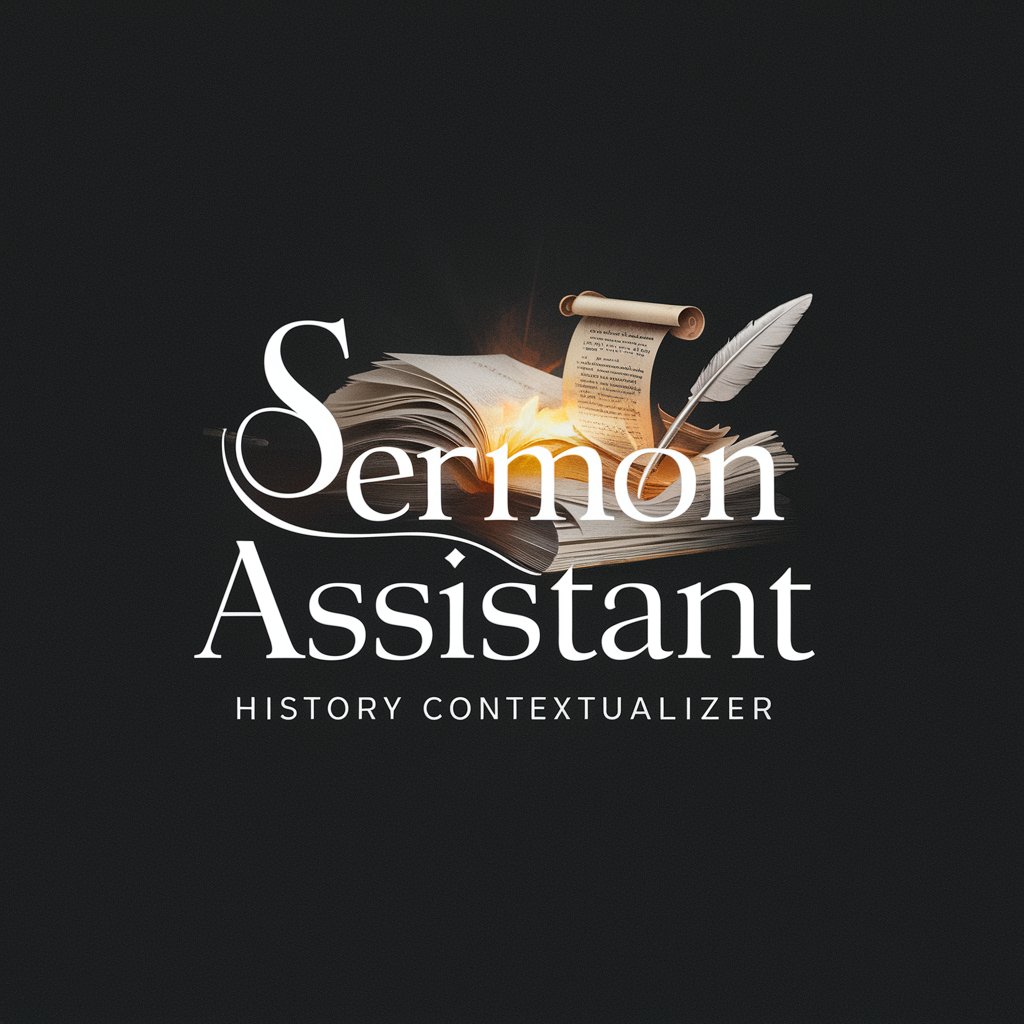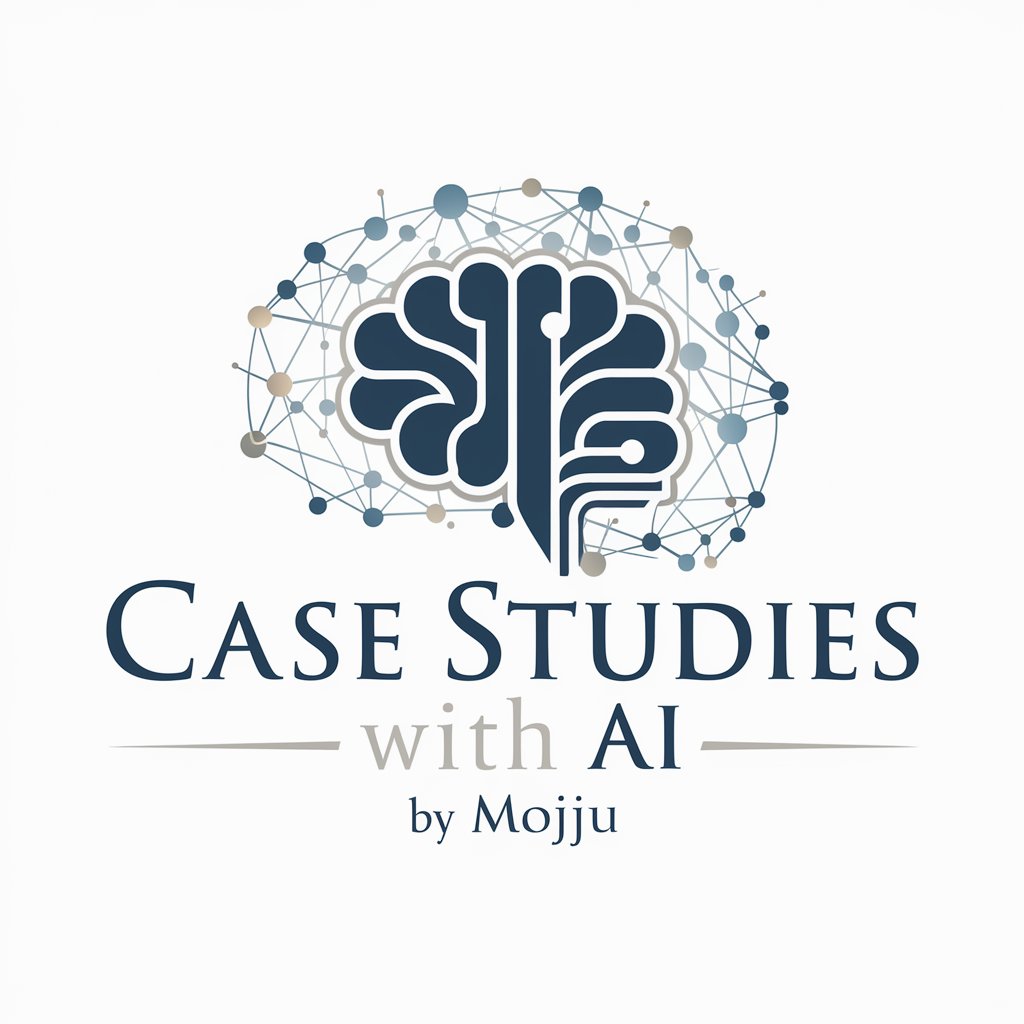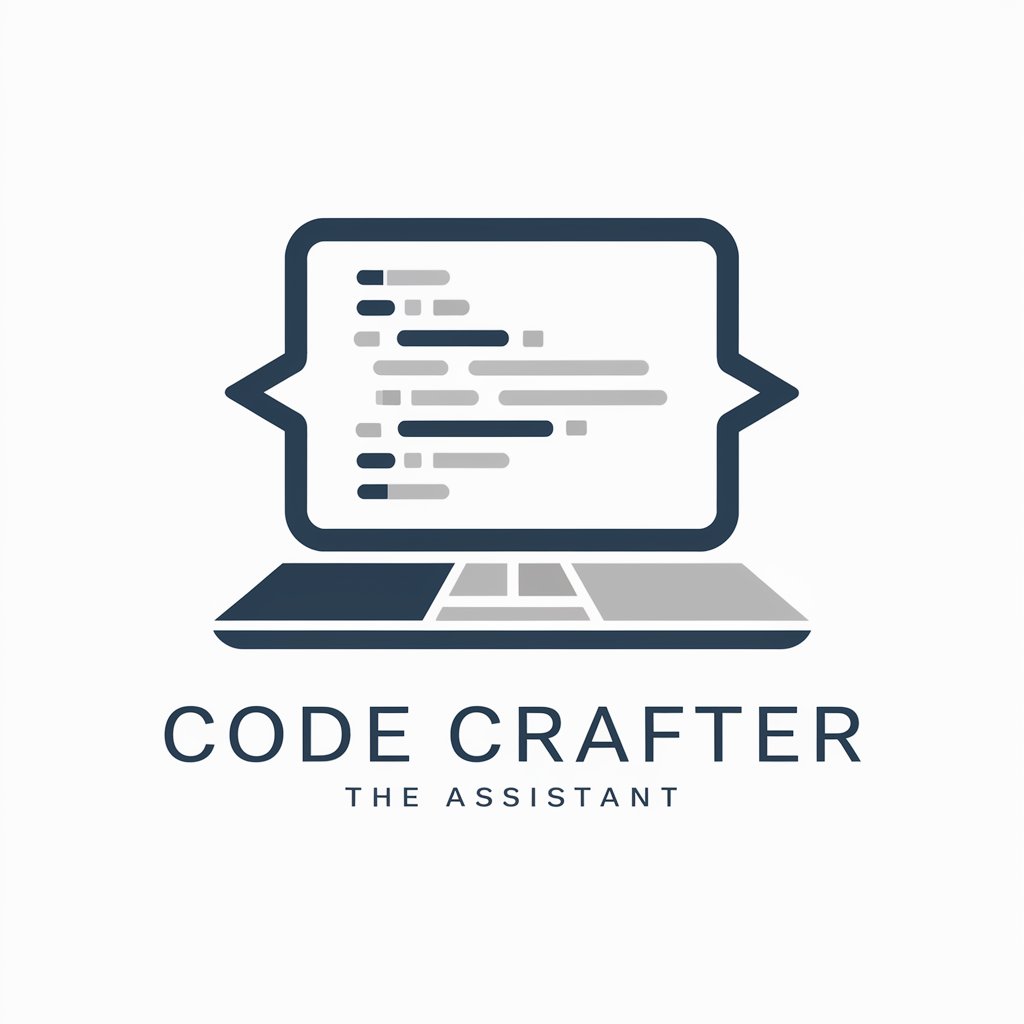
Sermon Assistant: History Contextualizer - Historical Context for Sermons

Welcome! Let's delve into the historical and cultural contexts of your sermon passages.
Enrich sermons with AI-powered historical insights
Provide the historical context for the scriptural passage
Explain the cultural background of the era when
Offer insights into the historical events that influenced
Discuss the historical significance of the themes in
Get Embed Code
Introduction to Sermon Assistant: History Contextualizer
Sermon Assistant: History Contextualizer is designed to provide historical and cultural context for scriptural passages and themes within sermon manuscripts. Its primary goal is to enrich sermons by offering in-depth, scholarly insights into the historical background and cultural setting of biblical texts, ensuring that the messages conveyed are deeply rooted in accurate and comprehensive understanding. This tool carefully analyzes sermon manuscripts, identifies key scriptural references and themes, and integrates relevant historical facts and cultural insights without disrupting the sermon's narrative or spiritual essence. For example, when a sermon references the Exodus, this tool would provide the historical setting of ancient Egypt, insights into the lives of the Israelites under Egyptian rule, and the cultural significance of the events described, thereby deepening the congregation's understanding of the scripture's relevance and power. Powered by ChatGPT-4o。

Main Functions of Sermon Assistant: History Contextualizer
Historical and Cultural Contextualization of Scriptural Passages
Example
Providing the socio-political background of Israel during King David's reign to deepen understanding of Psalms attributed to him.
Scenario
In a sermon discussing Psalms of lament and trust, this function would illuminate the struggles and faith of David against the backdrop of his kingdom's challenges, enhancing the congregation's connection to the themes of faith amidst adversity.
Thematic Historical Insight
Example
Exploring the concept of covenant in ancient Near Eastern societies to contextualize its significance in biblical narratives.
Scenario
For a sermon series on God's covenants with humanity, this function would provide an analysis of how covenants functioned in societies contemporary to ancient Israel, thereby enriching the audience's comprehension of the depth and gravity of biblical covenants.
Assessment and Enrichment of Historical References
Example
Correcting common misconceptions about the Pharisees and Sadducees in the context of New Testament passages.
Scenario
When a sermon addresses Jesus' interactions with the Pharisees and Sadducees, this tool would clarify their roles, beliefs, and social positions within 1st-century Judean society, offering a more nuanced understanding of these encounters.
Ideal Users of Sermon Assistant: History Contextualizer Services
Clergy and Religious Educators
Pastors, priests, rabbis, and other religious leaders or educators who seek to deepen their congregation's or students' understanding of scripture with historically informed sermons or lessons. They benefit from this service by providing richer, more engaging content that bridges ancient texts with contemporary relevance.
Theological Students
Students of theology or biblical studies who require a deeper historical perspective on scriptural texts for academic papers, presentations, or personal study. This tool aids them by offering scholarly insights that complement their theological education.
Authors and Content Creators
Writers and multimedia content creators focusing on religious, historical, or cultural topics who need accurate historical contexts to inform their work. This service supports them by ensuring their content is both engaging and historically sound, enhancing its value to their audience.

How to Use Sermon Assistant: History Contextualizer
1
Begin by visiting an AI-powered platform offering a trial without the need for logging in or subscribing to premium services.
2
Input your sermon manuscript text directly into the tool. Include scriptural references, themes, and any historical contexts you wish to explore.
3
Specify any particular historical or cultural contexts you're interested in, or ask for general historical enrichment of your sermon.
4
Review the historical insights and contextual information provided by the tool, integrating them into your sermon to enhance its depth and relevance.
5
Utilize the feedback loop: Adjust your manuscript based on the insights received and resubmit for further refinement as needed.
Try other advanced and practical GPTs
AI Cybersecurity Specialist
Empowering Cybersecurity with AI Insight

Consultor Legal
Empowering legal insight with AI

Case Studies with AI by Mojju
Transforming Data into Compelling Narratives

Warren Buffet Assistant
AI-Powered Investment Wisdom from Warren Buffet

Alex Hormozi
Empowering Businesses with AI-Powered Insights

JP Research
Empowering photonics research with AI

Realty, Development
Empowering Real Estate Decisions with AI

PósEconomiasAgráriaEDosRecursosNaturaisBR
Empowering Research with AI

Code Optimizer AI
Empowering Development with AI

Crypto Legal Assistant
Empowering Legal and Ethical Crypto Navigation

Culture Mate
Navigate global cultures with AI-powered insights.

Code Crafter
AI-Powered, Personal Code Assistant

Detailed Q&A about Sermon Assistant: History Contextualizer
What historical periods can Sermon Assistant: History Contextualizer cover?
This tool spans the breadth of biblical history, from ancient Near Eastern civilizations through the Greco-Roman world of the New Testament, and includes insights into early Christian history up to the medieval era.
Can it provide context for non-biblical historical references in sermons?
Yes, it can offer historical and cultural insights into various periods and figures mentioned in sermons, enhancing the understanding of their significance in relation to biblical themes.
How does the tool handle theological sensitivities?
It respects diverse theological perspectives by providing historical facts and cultural contexts without interpreting scriptural meaning, thus supporting a broad range of denominational beliefs.
Is this tool suitable for academic research?
Absolutely. It is designed to provide scholarly depth, citing reputable sources and offering insights beneficial for academic writing, research, and presentation in theological or historical studies.
How can I integrate the insights into my sermon without disrupting the flow?
The tool suggests ways to seamlessly embed historical contexts and insights into your sermon's narrative, enhancing rather than disrupting its flow, and ensuring the additions complement the spiritual message.